Filter by

Advances in the Molecular Mechanisms of Abscisic Acid and Gibberellins Functi…
Gibberellins (GA) and abscisic acid (ABA) are two phytohormones that regulate, in an antagonistic way, plant growth as well as several developmental processes from seed maturation and germination to flowering time, through hypocotyl elongation and root growth. In general, ABA and GA inhibit and promote, respectively, cell elongation and growth. Consequently, this mutual antagonism between GA an…
- Edition
- -
- ISBN/ISSN
- 9783036550237
- Collation
- oer.unej.ac.id
- Series Title
- -
- Call Number
- -
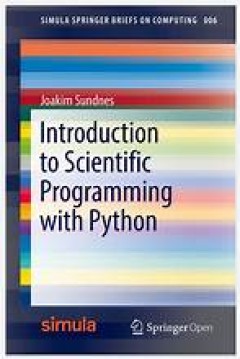
Modeling Excitable Tissue
This open access volume presents a novel computational framework for understanding how collections of excitable cells work. The key approach in the text is to model excitable tissue by representing the individual cells constituting the tissue. This is in stark contrast to the common approach where homogenization is used to develop models where the cells are not explicitly present. The approach …
- Edition
- 1
- ISBN/ISSN
- 978-3-030-61157-6
- Collation
- -
- Series Title
- Simula SpringerBriefs on Computing
- Call Number
- -

Bioimage Data Analysis Workflows ‒ Advanced Components and Methods
This open access textbook aims at providing detailed explanations on how to design and construct image analysis workflows to successfully conduct bioimage analysis. Addressing the main challenges in image data analysis, where acquisition by powerful imaging devices results in very large amounts of collected image data, the book discusses techniques relying on batch and GPU programming, as w…
- Edition
- 1
- ISBN/ISSN
- 978-3-030-76394-7
- Collation
- -
- Series Title
- Learning Materials in Biosciences
- Call Number
- X, 212

Vivarium :experimental, quantitative, and theoretical biology at Vienna's Bio…
The scientific achievements and forgotten legacy of a major Austrian research institute, from its founding in 1902 to its wartime destruction in 1945.OCLC-licensed vendor bibliographic record.
- Edition
- -
- ISBN/ISSN
- 9780262342049
- Collation
- 1 online resource.
- Series Title
- -
- Call Number
- -
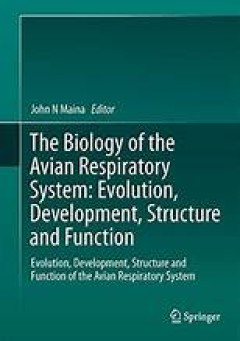
The Biology of the Avian Respiratory System
The central focus of this book is the avian respiratory system. The authors explain why the respiratory system of modern birds is built the way it is and works the way that it does. Birds have been and continue to attract particular interest to biologists. The more birds are studied, the more it is appreciated that the existence of human-kind on earth very much depends directly and indirectly o…
- Edition
- 1
- ISBN/ISSN
- 978-3-319-44153-5
- Collation
- Biologi
- Series Title
- -
- Call Number
- 570
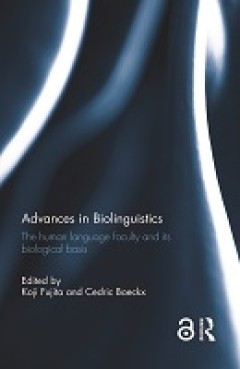
Advances in Biolinguistics: The Human Language Faculty and Its Biological Basis
Biolinguistics is a highly interdisciplinary field that seeks the rapprochement between linguistics and biology. Linking theoretical linguistics, theoretical biology, genetics, neuroscience and cognitive psychology, this book offers a collection of chapters situating the enterprise conceptually, highlighting both the promises and challenges of the field, and chapters focusing on the challenges …
- Edition
- -
- ISBN/ISSN
- 9781138891722
- Collation
- -
- Series Title
- -
- Call Number
- -

Inflammasome Signaling and Bacterial Infections
This volume details our current understanding of the architecture and signaling capabilities of known canonical and non-canonical inflammasome complexes and highlights their action, in particular in response to infection with important bacterial model organisms and the corresponding disease pathologies. The first chapters review new insights into the assembly and structures of inflammasome comp…
- Edition
- 1
- ISBN/ISSN
- 978-3-319-41170-5
- Collation
- XI, 282
- Series Title
- Current Topics in Microbiology and Immunology
- Call Number
- 610
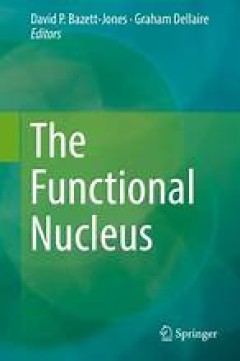
The Functional Nucleus
This book gives an in-depth overview on nuclear structure and function. It clearly shows that the epigenome and the three-dimensional organization of the nucleus are not independent properties. The intimate relationship between the location and the epigenetic modifications of gene loci is highlighted. Finally, it shows that the complex three-dimensional organization of the nucleus is not just o…
- Edition
- 1
- ISBN/ISSN
- 978-3-319-38882-3
- Collation
- VI, 513, 8 b/w illustrations, 48 illustrations in colour
- Series Title
- -
- Call Number
- -
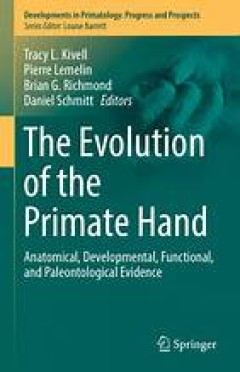
The Evolution of the Primate Hand
This book demonstrates how the primate hand combines both primitive and novel morphology, both general function with specialization, and both a remarkable degree of diversity within some clades and yet general similarity across many others. Across the chapters, different authors have addressed a variety of specific questions and provided their perspectives, but all explore the main themes descr…
- Edition
- 1
- ISBN/ISSN
- 978-1-4939-3646-5
- Collation
- XI, 589, 64 illustrations in colour
- Series Title
- Developments in Primatology: Progress and Prospects
- Call Number
- -

21st Century Guidebook to Fungi
The mysterious world of fungi is once again unearthed in this expansive second edition. This textbook provides readers with an all-embracing view of the kingdom fungi, ranging in scope from ecology and evolution, diversity and taxonomy, cell biology and biochemistry, to genetics and genomics, biotechnology and bioinformatics. Adopting a unique systems biology approach - and using explanatory fi…
- Edition
- -
- ISBN/ISSN
- 9781108776387
- Collation
- -
- Series Title
- -
- Call Number
- -
 Computer Science, Information & General Works
Computer Science, Information & General Works  Philosophy & Psychology
Philosophy & Psychology  Religion
Religion  Social Sciences
Social Sciences  Language
Language  Pure Science
Pure Science  Applied Sciences
Applied Sciences  Art & Recreation
Art & Recreation  Literature
Literature  History & Geography
History & Geography